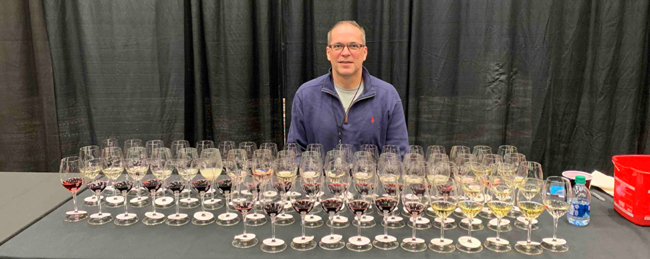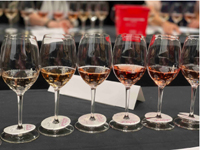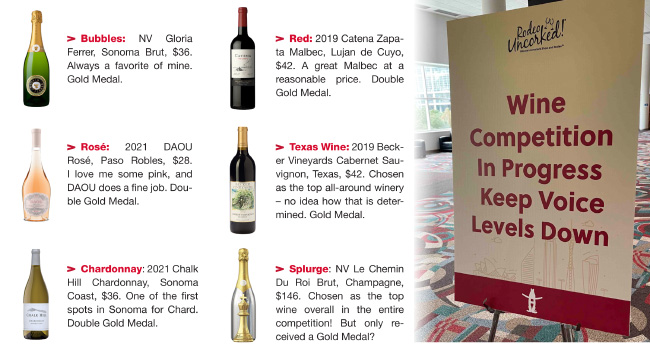
 By Jeffrey M. Kralik, Ph.D.
By Jeffrey M. Kralik, Ph.D.
www.thedrunkencyclist.com
Just about anyone who has lived in this region for longer than a minute knows that the month of March means Rodeo in Houston. Of course, there is much more to the Houston Livestock Show and Rodeo than just the rodeo events. There are the concerts, the rides, the food and the crowds. There is also, for the last twenty years, the wine. Since 2004, Rodeo Uncorked! International has strived to be one of the finest wine competitions in the United States.
For the past seven years, I have been a judge for the competition, which has grown into one of the largest wine competitions in the world, judging around 3,000 wines every year. The judging for the event occurs in November for the following March’s Rodeo, takes place over three days, and involves hundreds of volunteers, including over 100 judges.
PricewaterhouseCoopers oversees the entire process, which is a “double-blind” competition. Essentially, the judges only know the wines by a four-digit number and the category in which they were entered (e.g., “New World Pinot Noir Under $15” or “Old World Oaked Chardonnay $25-35”). The judges are divided into panels of five and each panel, on average, has 8 to 10 flights each day of 10 to 12 wines per flight, or approximately 100 to 125 wines each day. (It must be noted that judges are required to affirm that they will spit out the wine rather than swallow so as not to become inebriated, and boy, is that important!)
Each judge – the judges are a mixture of wine professionals, journalists and consumers – is tasked with evaluating each wine on its own merits and consider how it represents the category, giving it one of four designations: Gold, Silver, Bronze or No Medal. Briefly, a Bronze medal is awarded to wines that are good, varietally correct and a wine that we would serve, say, at a party or large gathering. A Silver medal should be awarded to those wines that are excellent, wines that you serve for a momentous occasion or when you might be trying to impress. Gold medal wines are those that are so outstanding that you are tempted to keep it all for yourself and maybe, just maybe share it with a spouse. No medal? Well, either the wine was mis-categorized, had some inherent flaw, or you simply regretted ever putting in your mouth.
After tasting through the flight individually, the panel then discusses each wine, and the judges declare which medal they have awarded the wine. If all five judges give a wine a “Gold” then it actually receives a “Double Gold.” Yes, I realize that double means “two of something,” and here it is five, but I didn’t make the rules. A relatively straightforward calculation determines the other medals awarded if the group does not come to a consensus (e.g., a wine that receives a gold, three silvers and a bronze is awarded a silver medal).
After all of the medals are determined for a particular category or class, the panel then awards a “Class Champion” and a “Reserve Class Champion” or the best and the second best wines in the category.
But it does not end there.
After all of the categories have been judged, several “Super Panels” are assembled to determine the “best of the best” including the best: White Wine, Red Wine, Value Wine, Texas Wine and Feature Region Wine. This year the feature region was Australia. These flights can be rather imposing. On one of my super panels, we had to choose the five “best” wines from a flight of 65 wines, all of which had already been awarded either a Gold or a Double Gold and included all varieties and price ranges. Yeah, that took a while.
A lot of time and effort goes into the wine competition every year, culminating in the Wine Auction, which was held on February 26th, and with some winners ending up in the Wine Garden during the Rodeo. I strongly recommend popping into the Wine Garden as you visit the Rodeo this year, as the menu (https://www.rodeohouston.com/Portals/0/PDFs/2023_WineGarden_Menu.pdf) has a few gems. Here are my suggestions, including the Wine Garden bottle price:
